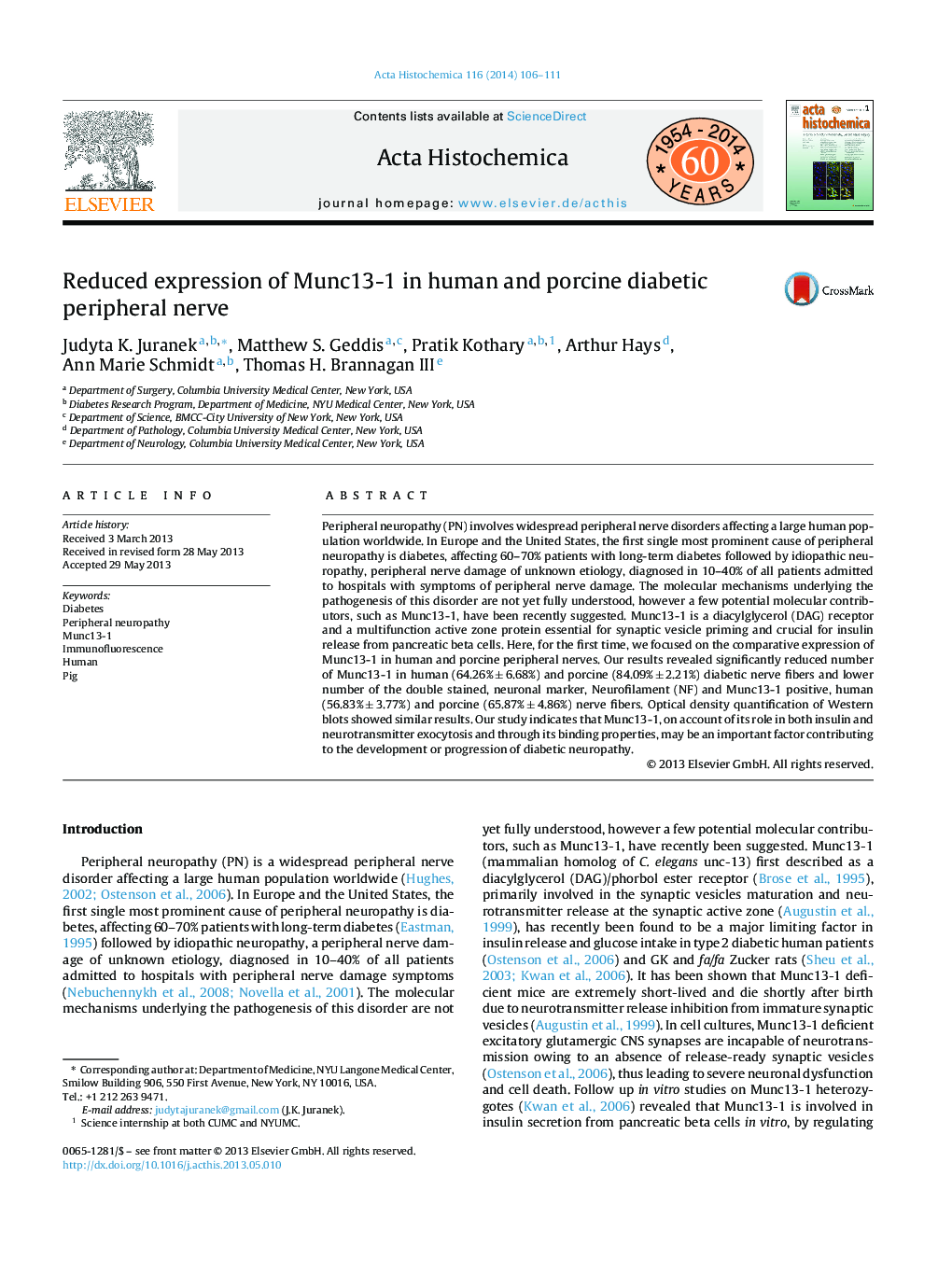| Article ID | Journal | Published Year | Pages | File Type |
|---|---|---|---|---|
| 10747191 | Acta Histochemica | 2014 | 6 Pages |
Abstract
Peripheral neuropathy (PN) involves widespread peripheral nerve disorders affecting a large human population worldwide. In Europe and the United States, the first single most prominent cause of peripheral neuropathy is diabetes, affecting 60-70% patients with long-term diabetes followed by idiopathic neuropathy, peripheral nerve damage of unknown etiology, diagnosed in 10-40% of all patients admitted to hospitals with symptoms of peripheral nerve damage. The molecular mechanisms underlying the pathogenesis of this disorder are not yet fully understood, however a few potential molecular contributors, such as Munc13-1, have been recently suggested. Munc13-1 is a diacylglycerol (DAG) receptor and a multifunction active zone protein essential for synaptic vesicle priming and crucial for insulin release from pancreatic beta cells. Here, for the first time, we focused on the comparative expression of Munc13-1 in human and porcine peripheral nerves. Our results revealed significantly reduced number of Munc13-1 in human (64.26% ± 6.68%) and porcine (84.09% ± 2.21%) diabetic nerve fibers and lower number of the double stained, neuronal marker, Neurofilament (NF) and Munc13-1 positive, human (56.83% ± 3.77%) and porcine (65.87% ± 4.86%) nerve fibers. Optical density quantification of Western blots showed similar results. Our study indicates that Munc13-1, on account of its role in both insulin and neurotransmitter exocytosis and through its binding properties, may be an important factor contributing to the development or progression of diabetic neuropathy.
Related Topics
Life Sciences
Biochemistry, Genetics and Molecular Biology
Biochemistry
Authors
Judyta K. Juranek, Matthew S. Geddis, Pratik Kothary, Arthur Hays, Ann Marie Schmidt, Thomas H. III,
